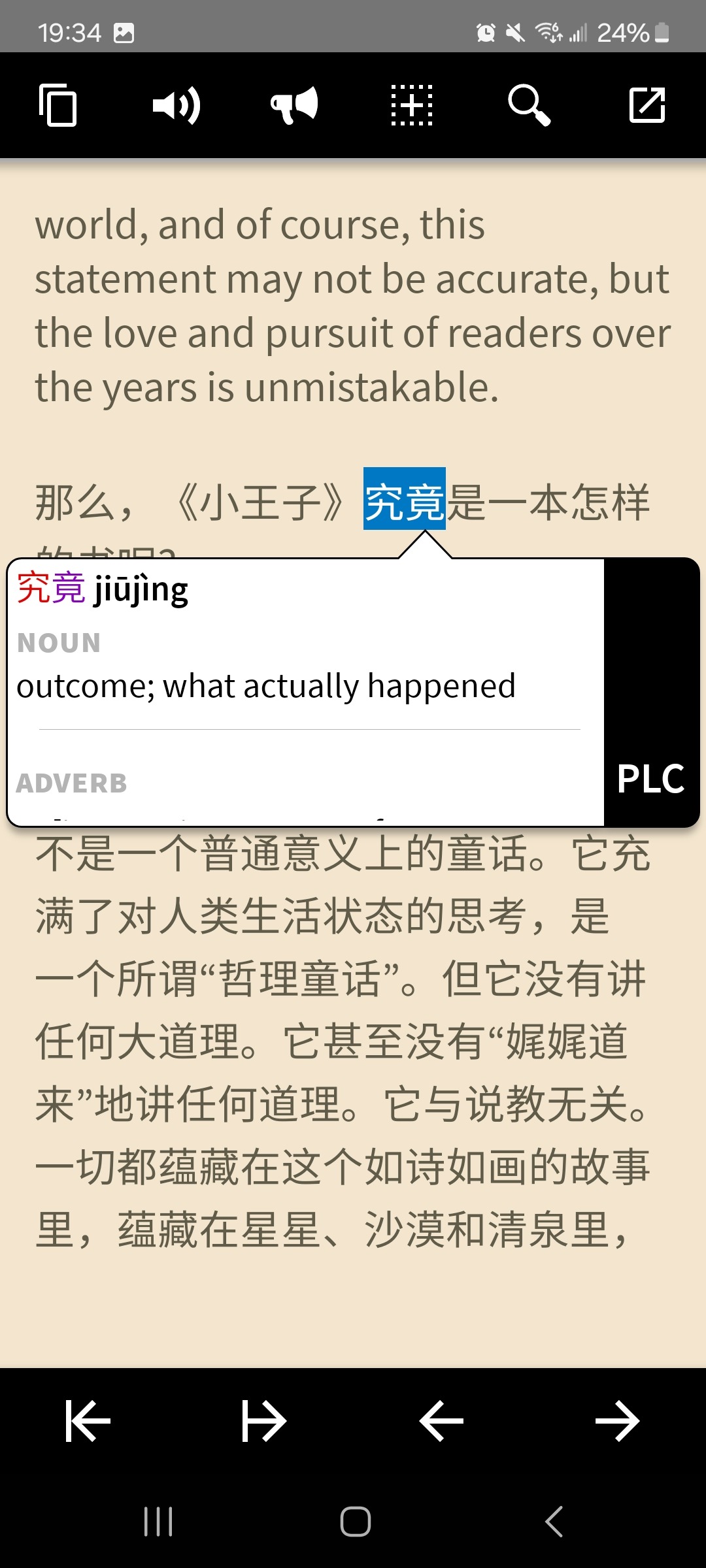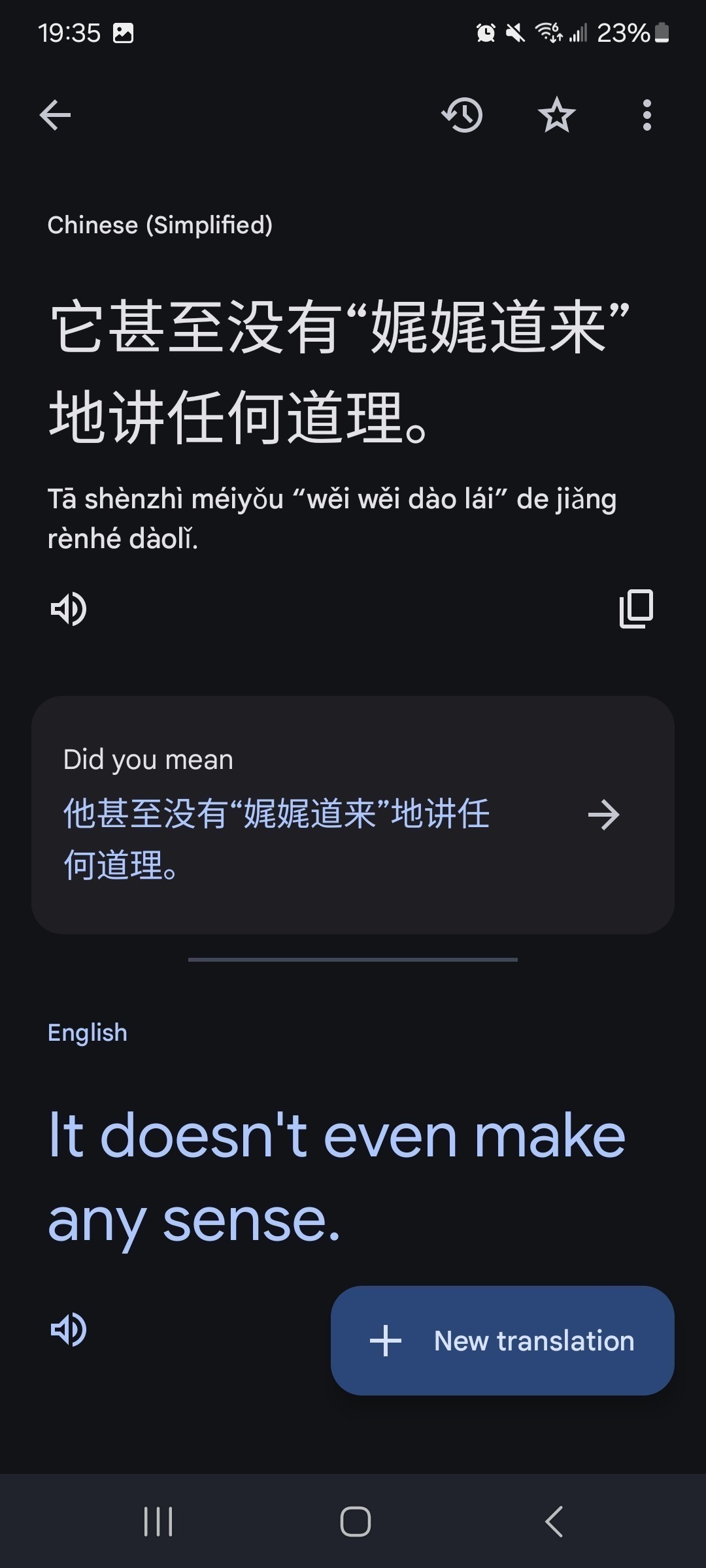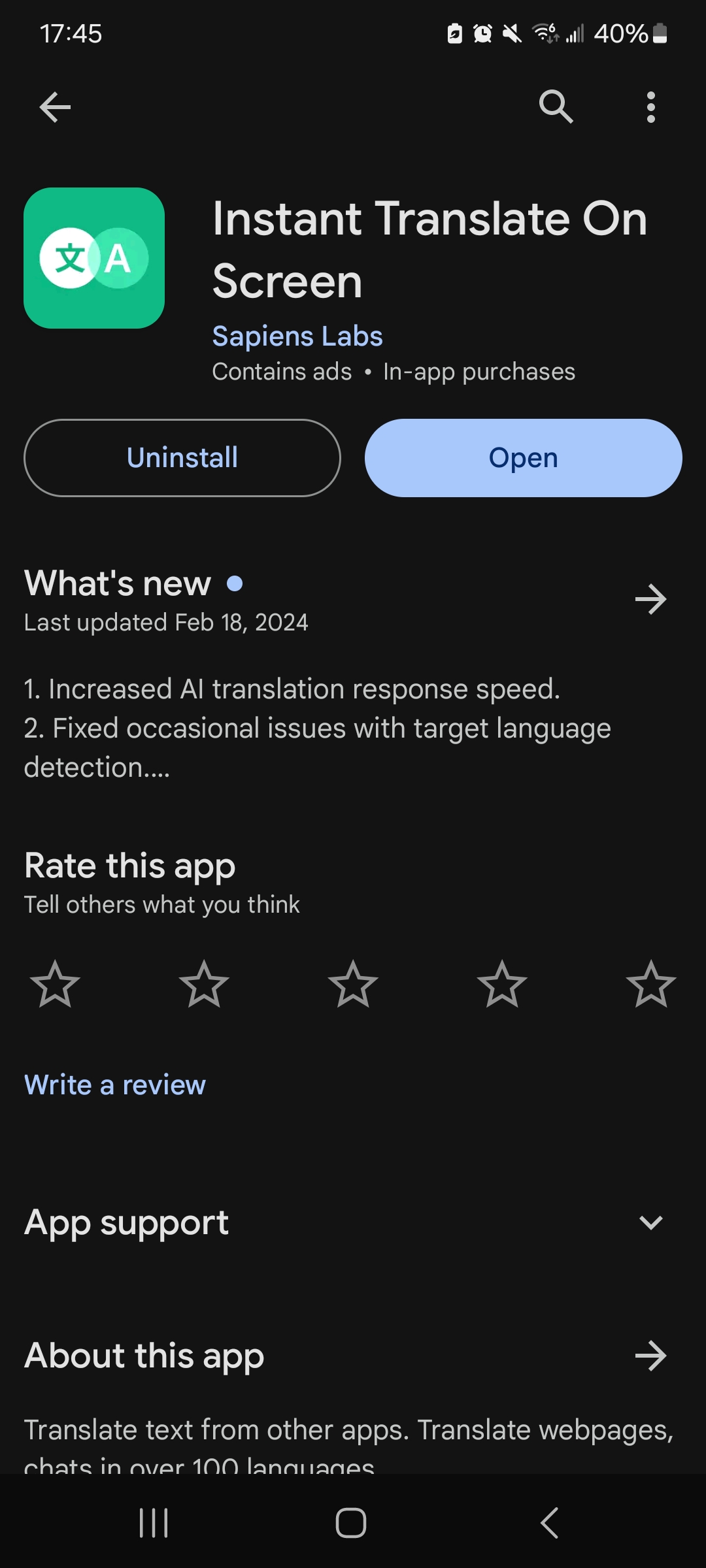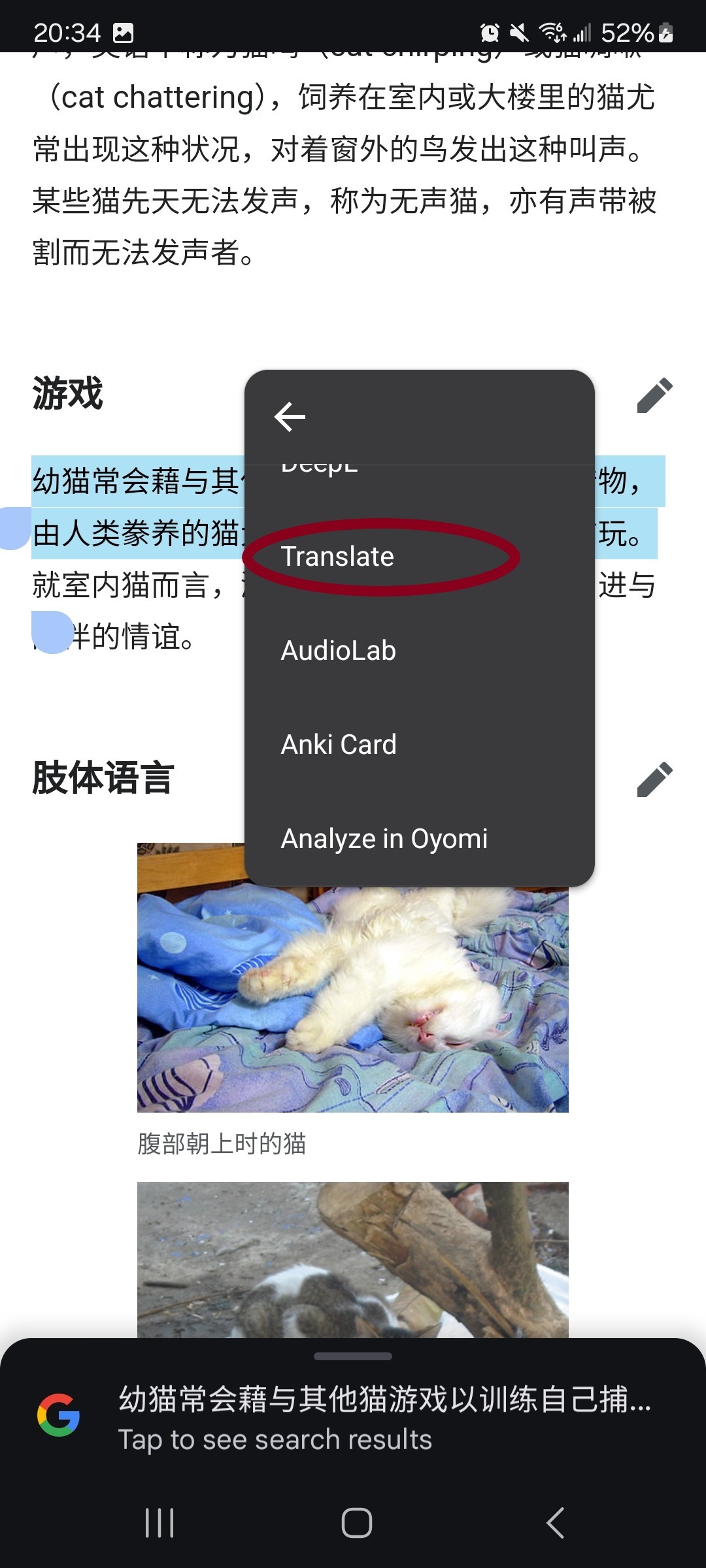Active vs Passive reading
You will use active and passive reading techniques throughout your language journey. When you first start reading Chinese, most of your time will be spent actively reading. Active reading is when you actively look up lots of words, break down the grammar and sentence structure, and make flashcards. Active reading should not be done for long periods, instead, it should be done in about 15 to 20-minute chunks. However, as you continue your language journey, more of your time will be spent doing passive reading. Passive reading is more leisurely, you may look up a word or two but you are not concerned with understanding every detail you read, just the overall idea or story. Passive reading is all about maximizing input and enjoying it, so this can be done for much longer periods, up to several hours. While you may do one of these more than the other depending on what your goals are, it is important to do both, as they will both increase your reading ability in different ways.
In the article, you will find several tools to help you with both your passive and active reading. Depending on what and how you like to read, you may find some of these tools more useful than others. I encourage you to look through all of them to see what best fits your needs. If you’re looking for information about reading resources, such as where to find Chinese books and articles, click the link below.
It’s also a good idea to have a good Chinese-English dictionary on hand, so you can look up examples and definitions for tricky words.
All Platforms
Immersive Translate
Immersive Translate is a powerful extension available on all popular browsers. It allows you to read web pages and documents in two languages. This is great for language learners because it lets you check your comprehension as you read. Start by downloading the extension for the browser of your choice.

After you download the extension, a pink bubble will appear on the right side of your screen. When you click on this, it will add an English translation underneath each paragraph on the website. This is very useful when you first start learning to read, especially if you combine it with another extension like Zhongwen that gives you a word’s definition and pronunciation. You’ll learn more about Zhongwen later.

As your reading abilities improve, I recommend only translating the paragraphs you struggle to understand. To translate one paragraph at a time, click on the gear icon under the pink bubble to access your settings, then make sure you have “Hover” enabled and the other two options disabled like in the picture below. Now when you Ctrl + click on a paragraph it will only translate that paragraph. If you are on mobile, it will be a right swipe to translate a single paragraph.

Here is an example where only one paragraph is translated. As your reading abilities improve, you should only use translations as needed and try not to rely on them too heavily.

To add translations to PDF or ePub files, click on the PDF/ePUB button in the settings.

Now you can upload any Chinese PDF or ePub to which you would like to add translations. I recommend using books or articles you’ve downloaded. Also, I generally prefer to use ePubs since they allow for paragraph-by-paragraph translation. If your book did not come as an epub, you can use a converter to change the format.

Once you’ve selected your document, click on “translate.” It may take a few minutes to prepare and translate your document depending on your internet connection and the size of the document, so be patient. Also, because it’s a machine translation, it won’t always be perfect, so you shouldn’t overly rely on the translation. It’s just there as a way to support your comprehension as you read. You should try to understand the Chinese on your own first.

Once your document is done, export it to your device. To read the document, you can use any reading program of your choice, but I highly recommend ReadEra if you tend to read on your phone like I do. If you like to read on your laptop, I recommend Aquile Reader.

In ReadEra, you can click on the gear icon at the top of your screen to change the way your document looks. ReadEra is highly customizable, so alter it to whatever you feel most comfortable with.

You can also highlight any words or sentences you would like to see the pronunciation or definition of.

When you use the dictionary option on a single word, it will use your phone’s built-in dictionary, and the definition will pop up at the bottom of your screen along with the pronunciation in pinyin.

When you use the translation option, Google Translate will give you a full translation with the pinyin pronunciation.

PC
Zhongwen
Zhongwen is a pop-up dictionary extension for Google Chrome that makes it easier to read webpages in Chinese. Once the extension is installed, all you need to do is hover over a word, and the English translation will pop up. Zhongwen is great for learning new vocabulary, but it won’t help you much with grammar or full-sentence translation, so it is best used with texts around your reading level. After you open the Zhongwen link and are in the Chrome web store, start by clicking on the blue “add to Chrome” button in the upper right-hand corner. Once it is installed, the button will change to say “remove from Chrome.”

Next, go up to your toolbar and click on the Zhongwen extension. This will immediately activate it and give you a list of shortcuts you can use with the extension.

Now, you can hover over any Chinese word and it will give you the reading and definition.

Built-in Translator
Most browsers have a built-in translator. All you need to do is highlight what you want to translate, right-click, and then select “translate selection to English.” Depending on your browser it may just say “translate” instead of “translate selection to English.”

The translation for your sentence will then pop up at the top of your page. Unfortunately, it doesn’t give you the pronunciation, so this method should be used in combination with an extension like Zhongwen, or for quick translations while reading passively.

Mobile
Readibu
Readibu is a fantastic app for reading Chinese web novels. It has a built-in pop-up dictionary and allows you to import your own web novels. After you download and open it, go to the “Discover” tab at the bottom of the screen to see their web novel library.

Click on a genre you find interesting, then select a novel to start reading it.

If you like a novel, you can bookmark it in the upper right corner to easily find it again later. To start reading, click “read.”

This page shows you the original web novel page where you can easily move between chapters. To convert it into easy reading mode, click the yellow book icon at the bottom of the screen.

In reading mode, you will be able to see pinyin and use the pop-up dictionary as well as have phrases underlined. Click on “settings” to change what assists are visible.

In settings, you can toggle pinyin, underlined phrases, and name recognition. I recommend turning off pinyin and underlined phrases once you hit a high intermediate level, so you don’t develop a dependency on them. Remember, you’ll still have the pop-up dictionary to help you if you don’t know a word.

To see a word’s translation and reading, simply click on it and a textbook will pop-up.

Built-in sentence translation is only included in the premium version of Readibu, but there is a work around. First, highlight the sentence you want to translate, then click “copy.”

Next, paste the sentence into Google Translate to get a full sentence translation with pinyin. If you find this bothersome, because you have to constantly switch out of the app to translate sentences, you are probably trying to read something too difficult for you. You should only have to translate sentences occasionally if you are reading at or just above your level.

To add new web novels, go back to the main menu and click on the “bookmarks” tab at the bottom of your screen. Next, click on the plus sign in the upper right corner.

Paste the URL of the web novel you want to add, then click “confirm.” The novel will automatically be added to the bottom of your bookmarks list, so you’ll need to scroll down to see it.

When you first click on a new novel, you will be prompted to name it, then you can start reading. If you’re looking for good web novel sites, check out the link below.

Pleco – Premium
Pleco is the best dictionary for Chinese learners, but it’s not just a dictionary, it also has some other fantastic features as part of their basic bundle for $30. It includes full-screen handwriting, OCR, flashcards, stroke order diagrams, a document reader, Mandarin Audio, and the Oxford Chinese Dictionary. All of these are very convenient to have, but not necessary. However, if you are interested in these features, you can find them in the Pleco app under “add-ons.”

The file reader add-on is useful when reading books or documents in Chinese. Click on “file reader” from the sidebar, then select “open new file.” The reader works best with epub files, but you can also use txt or pdf files.

The file I’ve opened here is a dual-language book I created using Immersive Translate. However, you can import any Chinese book you have.

To see a word’s reading and definition, click on it.

To create a flashcard, click on the plus button at the top of the screen. If it is a plain plus, then you don’t have any flashcards for that word. If it’s a plus with a solid box around it, then that flashcard is already in your currently selected category. And, if it’s a plus with a dotted box, then it’s already a flashcard, but in a different category than the one you have selected.

To change the category a flashcard is sorted into, hold down on the add flashcard button, then select the category you want new cards to go into. New cards will go into the category you select by default until you change it.

Unfortunately, Pleco does not have built-in sentence translation, so to translate a sentence you’ll need to select and copy it.

Next, paste it into Google Translate, or your translator of choice, to get a full-sentence translation.

Android
Instant Translate
Instant Translate allows you to copy and translate text you normally wouldn’t be able to such as that in images, apps, and videos. After downloading the app, you can turn it on either by opening the app and pressing the start button or by putting the widget for the app in your instant access bar and turning it on from there. It will then ask for permission to record your screen which you must say yes to in order to use the app.

Once the app is running, it will appear as a green circle on your screen. Tap the green circle to open the translate menu. First, make sure it is set to translate from Chinese to English at the bottom of the pop-up widget. Next, to translate Chinese text, you will mostly use “global translate” and “region translate.” Global translate will translate all the text it can find on your screen, while region translate will allow you to select the section of text you want to translate. Region translate is often better at grabbing text than global translate, so I tend to use it more often.

When you use global translate, you can tap on the section of text you want to look at more closely, and the translation window will pop up along with the original text. You should look at what you’re translating in more detail because the translator won’t always get everything 100% right, especially for a language like Chinese. This doesn’t matter as much if you’re mostly using it to look up words and for quick translations, but if you’re using the translator to translate every sentence of what you’re reading, you need to switch to reading something easier.

When you expand the translate window, you will see more options. The first button will break down the sentence into pieces. You can click on any of these words to get more detail about them including pronunciation, translations, and etymology. The next button is for copying the text. You may want to copy the text into a different app such as a Chinese-English dictionary or Anki to make flashcards. The other two buttons allow you to listen to the sentence and search it on Google respectively.

When you click on a word, it will take you to the page below where you can see components, pronunciation, and examples.

Built-in Translator
To use the built-in translator on your phone for translating unselectable text such as that in manga or games, hold down the home button at the bottom of your screen. Note: This may not work on some older Android devices!

Next, select the translation button that appears in the bottom right corner.

To ensure you only translate what you need, set the translation so it translates from Chinese into Chinese. This will allow you to select specific words and sentences without translating the entire page.

Next, highlight the word you want to translate, and it will automatically pull up the Google search results for that word. If you want the actual translation, click on “Translate.” Keep in mind that you may need to zoom in before activating the translator if the text is small.

When you click on “Translate,” it will give you the translation along with the pinyin.

You can also select whole sentences to translate them!

To use the built-in translator on your phone for translating articles and text on web pages, simply highlight the text you want to translate, scroll through the options until you see where it says “translate,” and click it.

After you translate the text, you will be able to see the English translation and pronunciation of the Chinese characters. I usually use this method for single words and only translate full sentences when I can’t understand them at all.

IOS
Built-in OCR and Translator
IOS has powerful built-in OCR and translation features that allow you to easily select a word and translate it even if it’s part of an image or a normally unselectable text. All you have to do is highlight a word and tap “translate” in the pop-up menu. In this pop-up menu, you can also copy the word if you would like to move it to another app like Pleco or Anki for making flashcards.

After pressing “translate,” it will then show you a translation. You can also listen to the pronunciation of the word or sentence you selected.

iTranscreen
Unfortunately, not all apps work with the built-in OCR. In some apps, especially games, there is no way to copy or translate text. This is where iTranscreen can be very helpful. It allows you to translate text you normally wouldn’t be able to translate.

I’ve found the app is most effective when you use it in game mode. Just make sure it’s set to translate from Chinese into English, then press “start.” You should then see a pop-up that you can use to select the text you want to translate.

Paper Books
Google Translate
With the OCR capabilities of Google Translate, you can easily take a picture of a word or sentence you don’t understand and quickly get the translation and pronunciation. Start by opening Google Translate and pressing the camera button in the bottom right corner.

Next, take a picture of what you want to translate, then at the top of your screen, make sure you have it set to “original.” Showing the original text is very important for learners because it will allow you to copy words and select just the sections you want to translate. Also, the OCR is more likely to mess up the translation if you don’t manually select the text.

Next, highlight the word or sentence you want to translate, and it will automatically show you a translation. If you would like to make flashcards out of the words or sentences, you can then copy them into Anki or your Chinese-English dictionary of choice.







